HomeStream
News & more!Escapes
My trip reviewsGallery
My travel photosPlanning
Trip planningGuides
Destination guides
My Escapes  Spain
Spain  Valencia
Valencia  Frenetic Valencian Escape!
Frenetic Valencian Escape!  Exploring Valencia's Old Town
Exploring Valencia's Old Town
Exploring Valencia's Old Town
On my second day I decided to head right for the heart of the city. Little did I know about how exciting and how large the Old Town is.
It has peculiar winding narrow streets that criss-cross each other. From above the Old Town's streets are spiderweb-like.
I stayed at the NH Villacarlos Hotel and I decided to simply walk to the Aragón metro station (quite far by foot) and from there I traveled to Xàtiva (central area), where the beautiful old train station is found.
From that point on, after checking out the Ayuntamiento area, I went deep into the Old Town - where the big city grew out from!
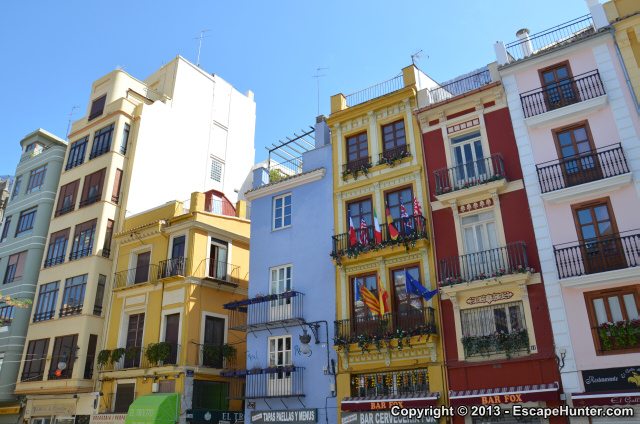
View Photo Gallery for more travel photos
The Mercado Central
It's the beautiful old market hall of the city. Constructed in 1914, it's one of the oldest market halls of its kind in the entire Europe!
Among the top attractions of Valencia, so don't miss it!
Unfortunately at the time of my visit it was closed... Reason unknown.
I attempted visiting on multiple days, but without success. It looks beautiful from outside, but it was a shame I could not explore the interiors and see the dynamical traditional market life.
Oh, Valencians call it Mercat Central and you might want to check out its official website for further documentation and photos.
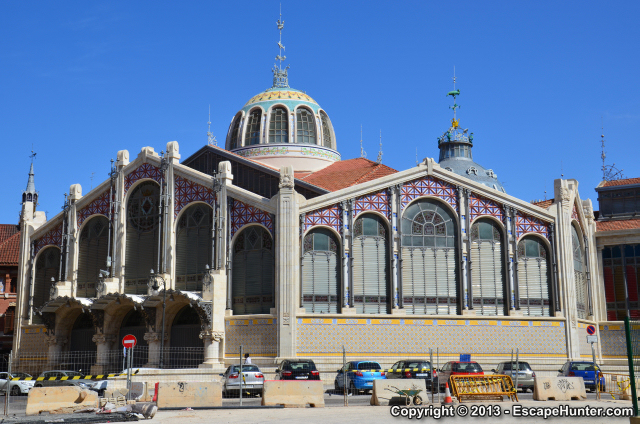
The Mercado Central from the rear... Why from the rear? There was simply more space there to immortalize it
View Photo Gallery for more travel photos
The Cathedral of Valencia and the Holy Grail
The full name in Spanish of the Valencian Cathedral is: "Iglesia Catedral-Basílica Metropolitana de la Asunción de Nuestra Señora de Valencia".
In Valencian, that sounds like this: "Església Catedral-Basílica Metropolitana de l'Assumpció de la Nostra Senyora de València".
Having-been finished in 1262, it's one of the oldest churches that I've been to.
To me it still is an unfinished building. One can observe this easily by walking in and around. It's one of many "unfinished cathedrals" in Europe.
Peculiar shapes, unusual looks make it a special attraction. And... it's much larger than what you can see on my photo below...
Architecturally it's a rich building - contains Romanesque, French Gothic, Renaissance, Baroque and Neo-Classical elements alike.
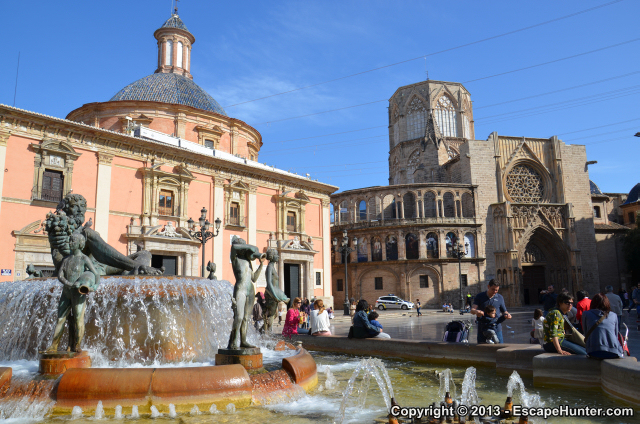
The orange Basílica de la Virgen de los Desamparado building and the Cathedral of Valencia to the right
View Photo Gallery for more travel photos
Entering the Cathedral was free. I attended one of the most beautiful Roman-Catholic ceremonies ever. It was held in Spanish (not Valencian) and sounded especially beautiful. I loved hearing crowd sing and the priest's clear voice echoing from the ancient walls. I felt refreshed, uplifted.
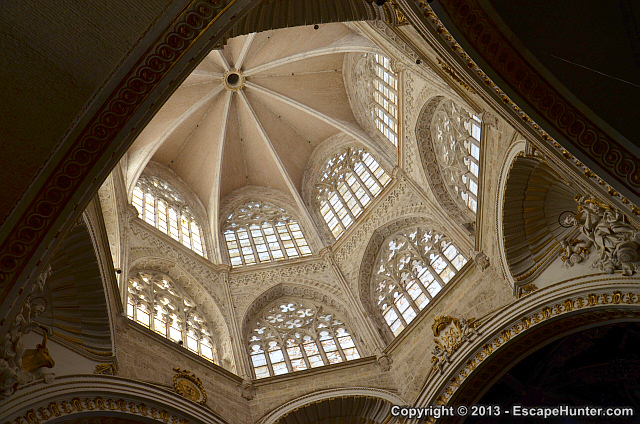
Impressive cupola of the Cathedral...
The religious ceremony which I attended was uplifting! The building has fantastic acoustics.
View Photo Gallery for more travel photos
Interestingly, some of the stones for constructing the Cathedral came from the Benidorm area and boats were used for transporting them.
There's a "Holy Grail" cup held separately in a chapel (which is a smaller room, yet still part of the main building). There, at the time of my visit, a religious ceremony was undergoing. Couldn't get too near to the grail, as I didn't want to bother anyone.
I took a few long-distance shots of the Holy Grail, which is supposed to be THE Holy Grail (according to the local tradition and religious community).
This is one of many cups claimed to be the Holy Grail (the cup that's believed to have caught Jesus' blood following his crucifiction).
It's believed that this cup was taken by Saint Peter to Rome in the 1st century and from there it eventually reached where it's found today.
The cup has a gold base that's adorned with 2 emeralds.
Further Explorations in the Old Town
I explored the area in its lengths and widths. It's quite a large zone, but not as large as Barcelona's or Vienna's old quarters.
Some of the attractions are rather hidden and even the winding streets themselves and the inventive street art are attractive.
Palacio del Marques de Dos Aguas is the name of the Rococo palace that's home to the Ceramics Museum. This was the most beautiful building I saw in the entire Valencia!
It's forbidden to touch the frontal richly-decorated part around the entrance. It's fantastically well-preserved and ethical travelers must abide by these rules.
The baroque decorative details are breathtaking and it looks like its walls are made of marble. Below you'll see a picture of the building.
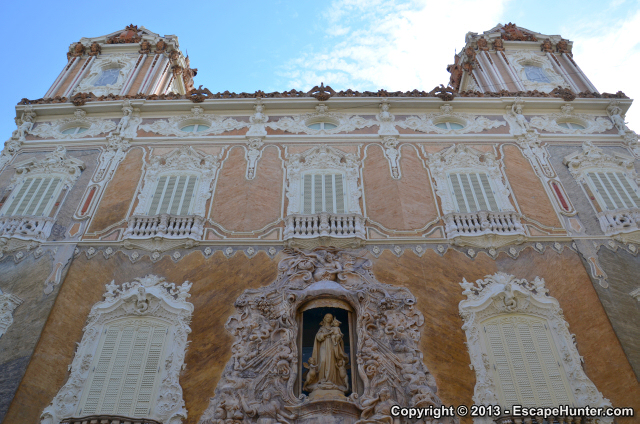
The Ceramics Museum is in a rather dark area and from the narrow shady street I was unable to immortalize the beautiful violet and orange colours of its marble-like walls.
View Photo Gallery for more travel photos
The Plaza Redonda is another important attraction, although many miss it!
Once you are there, you might not notice the place you are in... Buildings form a cicular plaza between them.
Plenty of guidebooks will show beautiful photos of how it once looked, but that beauty has been destroyed by this "restoration".
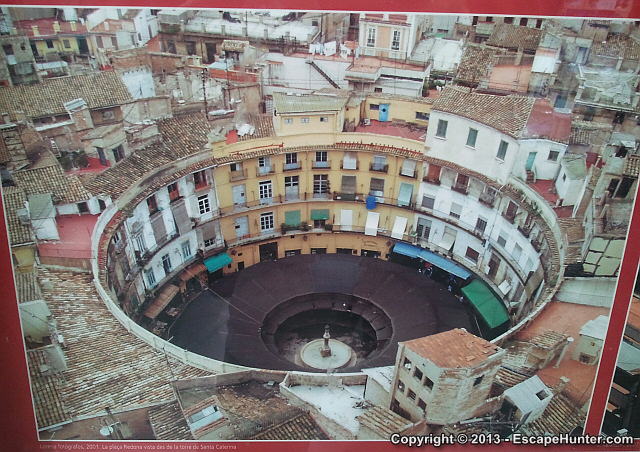
Photo of a street poster. This is how it looked before, but the "restoration" work had put an end to it!
View Photo Gallery for more travel photos
Too bad that after the refurbishing work, it has lost its traditional looks, vintage magic. Today it's a clean place, more modern-looking and filled with souvenir merchants.
The Plaza Redonda today has a simplified, yellowish flat look. To me it looked like a 1940's minimalist building, but in fact it was constructed in the 1800's by taking account of street commerce.
Locals also called this "El Clot" (The Hole).
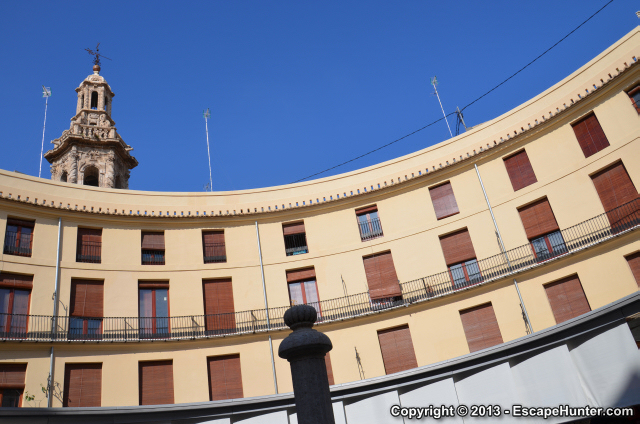
And how ugly it is today! The results of "restoration"...
View Photo Gallery for more travel photos
Then there is the Silk Exchange (Silk Market) building... Erected between 1482 and 1548, it's literally a small fortification with delicate decorations.
The late Valencian Gothic building has even landed on UNESCO's World Heritage Site list in 1996 already.
Valencia used to be a prosperous center for trade in the 14th-15th centuries, but commerce still plays an important role in the local economy.
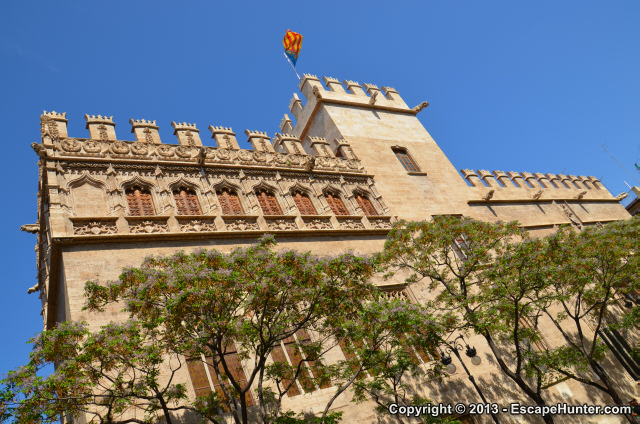
Llotja de la Seda (the Silk Exchange) is a prominent attraction in the Old Town. Just an extra short walk from the Mercado Central can get you there.
View Photo Gallery for more travel photos
Couldn't help mentioning the delicate decorations, which can be found almost everywhere in the Old Town. Among them are the ceramic tiles.
In Spain almost everything is decorated. The cities fly in art. From door handles to street steps, doors... almost everything is delicately decorated.
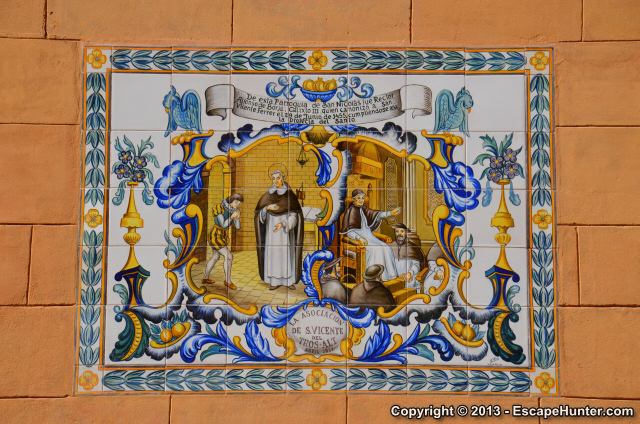
A tile on a wall. Typical to Spain and Valencia is full of beautiful tiles marking various spots.
View Photo Gallery for more travel photos
Valencia's Old Town used to be surrounded by walls the ancient past. Almost nothing has remained from those protective walls.
It's rather the turrets that have remained relatively intact and constitute an attraction. They can be visited and they're great places to admire the skyline from!
I visited the remaining Torres Serranos and Torres de Cuarto (or Torres Quarto in Valencian). Both are twin turrets and have been constructed to guard the entrance to the city.
If you look at the map of the central area, you can still see the outlines of the former city - basically the Old Town.
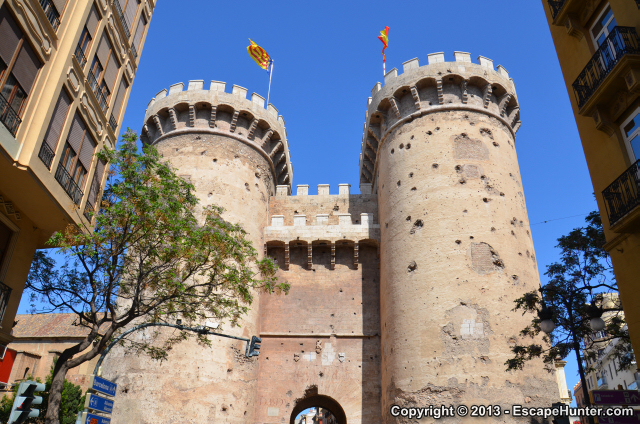
The Torres de Quart twin turrets, built between 1441-1460 were part of the old city walls.
View Photo Gallery for more travel photos

About the Author:
Escape Hunter, the young solo traveler in his early 30's explores the World driven by curiosity, thirst for adventure, deep passion for beauty, love for freedom and diversity.
With a nuanced, even humorous approach to travel, an obsession for art and design, Escape Hunter prefers to travel slowly, in order to learn and "soak up" the local atmosphere...
Comments

As "Escape Hunter" - the curious incognito traveler with an insatiable drive to explore, I embark on slow and deep travels around
our beautiful World.
Join me and I will show you exciting destinations
"from within", through my
"escape" trips!

Travel Slang Dictionary
Guide to my personal travel slang vocabulary, which seasons my content...

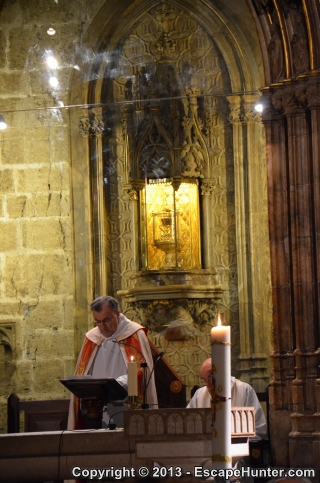





The colourful buildings are right near the Mercado Central...